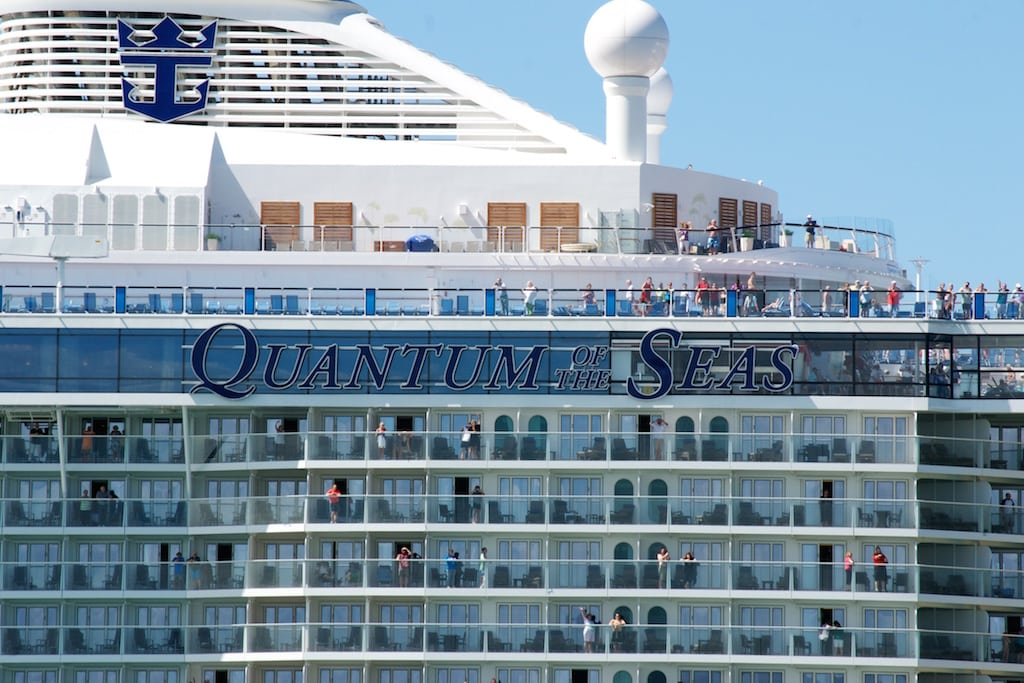Skift Take
Royal Caribbean is hoping to accomplish major progress towards reducing greenhouse gas emissions and landfill waste by a self-imposed 2020 deadline. The problem is that the cruise giant fell short of its 2015 goals, and faces an uphill battle to reach its ambitious goals for the future.
Cruise lines often talk up the effort they put into running more sustainable operations both onboard their vessels and when their ships stop in ports around the world.
The latest sustainability report from Royal Caribbean Cruises, which runs the Royal Caribbean International, Celebrity Cruises, and Azamara Club Cruises brands, shows the challenges of scaling sustainable technology across a cruise fleet.
Royal Caribbean has made a commitment to reduce its CO2 output by 35 percent from its 2005 benchmark by 2020, in addition to responsibly sourcing 90 percent of its globally caught seafood. It also wants to reduce its waste sent to landfills by 85 percent compared to its 2007 benchmark.
For every new ship that goes online with more efficient technology, though, older ships gain only incremental improvements towards reducing pollution, energy use, and waste. This may make the volume of total pollution increase, despite strides towards sustainability on new ships. Royal Caribbean International, in particular, has added four megaships since 2014.
Examining the 2015 metrics released by Royal Caribbean, however, it’s clear that only slight progress is being made regarding pollution. The company is still in the process of installing emissions scrubbers across its fleet, but even scrubbers won’t bring fundamental change to the pervasive nature of cruise line air pollution.
Here’s a look at the company’s data regarding emissions, energy consumption, and waste disposal.
| KEY PERFORMANCE INDICATORS | 2015 | 2014 | 2013 |
|---|---|---|---|
| Greenhouse gas emissions (metric tonnes CO2e) | 4,456,912 | 4,415,011 | 4,337,542 |
| Scope 1 | 4,446,098 | 4,404,403 | 4,271,577 |
| Scope 2 | 10,813 | 10,608 | 10,823 |
| Emissions intensity per 1,000 available cabin days | 121.3 | 126.9 | 127.6 |
| Energy consumption (megawatt hours) | 6,511,654 | 6,545,148 | 6,408,756 |
| Energy intensity per available cruise passenger day | 0.1777 | 0.1874 | 0.1923 |
| Total SOx emissions (metric tonnes) | 58,186 | 61,156 | 60,015 |
| Total NOx emissions (metric tonnes) | 64,123 | 66,480 | 65,279 |
| Total Particulate Matter emissions (metric tonnes) | 7,169 | 7,547 | 7,406 |
| Solid waste-to-land (pounds per available cruise passenger day) | 0.46 | 0.55 | 0.91 |
As you can see, incremental improvements have been made, particularly in the areas of reducing solid waste sent to landfills. Newer technology that can be installed fleet-wide is helping to make ships more energy efficient, as well.
The report admits that the company has fallen short of its previous stated goals to reduce greenhouse gas emissions.
“Over the past ten years, we have been able to reduce our greenhouse gas emissions by nearly 25 percent per available passenger cruise day,” states the report. “… As our 2015 Save the Waves Goals come to a close, we are able to reflect on our progress and what we have learned. While we fell short of our aspiration to cut greenhouse gas emissions by one-third, we take pride in the meaningful results that we have accomplished – spurred by our collective ambition to go above and beyond.”
You can read the full report below.
The Daily Newsletter
Our daily coverage of the global travel industry. Written by editors and analysts from across Skift’s brands.
Have a confidential tip for Skift? Get in touch
Tags: climate change, royal caribbean, sustainability
Photo credit: Royal Caribbean International has made strides in some aspects of sustainability, but has failed to improve in others. Quantum of the Seas, one of Royal Caribbean Cruises' newest ships, is pictured here. nathanmac87 / Flickr
